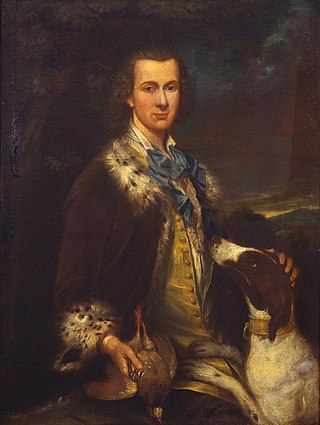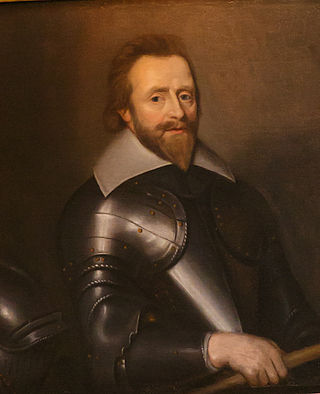Earl of Meath is a title in the Peerage of Ireland created in 1627 and held by the head of the Brabazon family. This family descends from Sir Edward Brabazon, who represented County Wicklow in the Irish House of Commons and served as High Sheriff of Staffordshire in 1606. In 1616 he was raised to the Peerage of Ireland as Baron Ardee. He was succeeded by his eldest son, the second Baron. In 1627 he was created Earl of Meath in the Peerage of Ireland, with remainder to his younger brother the Hon. Sir Anthony Brabazon. Lord Meath was succeeded by his son, the second Earl. His grandson, the fourth Earl, served as Lord-Lieutenant of Dublin and of Kildare. His wife Dorothy Stopford, daughter of James Stopford and Mary Forth, was a close friend of Jonathan Swift. He died childless and was succeeded by his younger brother, the fifth Earl. He was also Lord-Lieutenant of Dublin. Lord Meath married the Hon. Juliana, daughter of Patrick Chaworth, 3rd and last Viscount Chaworth.

Earl Peel is a title in the Peerage of the United Kingdom. The Peel family descends from Robert Peel, eldest son of a wealthy cotton merchant. The family lands, known as Drayton Manor, in the County of Stafford would become more commonly known in modern-day as an amusement park. The family seat is Elmire House, near Ripon, North Yorkshire.

Earl of Limerick is a title that has been created twice in the Peerage of Ireland, associated first with the Dongan family, then with the Pery family.

Baron Muskerry is a title in the Peerage of Ireland. It was created in 1781 for Sir Robert Deane, 6th Baronet. He had previously represented County Cork in the Irish House of Commons.
Baron Crofton is a title in the Peerage of Ireland. It was created in 1797 for Dame Anne Crofton. She was the widow of Sir Edward Crofton, 2nd Baronet, of the Mote, who had represented Roscommon in the Irish House of Commons and had been offered a peerage just before his death. The peerage was instead bestowed upon his widow. She was succeeded by her grandson, the second Baron, who had already succeeded as fourth Baronet. He sat in the House of Lords as an Irish Representative Peer from 1840 to 1869 and served as a Lord-in-waiting in the three Conservative administrations of the Earl of Derby and in Benjamin Disraeli's first government. His son, the third Baron, served as an Irish Representative Peer between 1873 and 1912 and was also State Steward to the Lord Lieutenant of Ireland. His nephew, the fourth Baron, was an Irish Representative Peer from 1916 to 1942. As of 2014 the titles are held by the latter's great-great-grandson, the eighth Baron, who succeeded his father in 2007.

Baron Avebury, of Avebury in the County of Wiltshire, is a title in the Peerage of the United Kingdom. It was created 22 January 1900 for the banker, politician and archaeologist Sir John Lubbock, 4th Baronet. He was succeeded by his eldest son, the second Baron. On his death the titles passed to his nephew, the third Baron. He was the son of Harold Fox Pitt Lubbock, fourth son of the first Baron, who died in 1971. The title then passed to the third Baron's first cousin, the fourth Baron, the son of Maurice Fox Pitt Lubbock, sixth son of the first Baron. The fourth baron was a Liberal Democrat politician and one of the ninety excepted hereditary peers who remained in the House of Lords after the passing of the House of Lords Act 1999. He was succeeded by his son, the fifth Baron, in 2016.

Baron Milford is a title that has been created three times, once in the Peerage of Ireland and twice in the Peerage of the United Kingdom. All three creations have been for members of the same family. The first creation came in the Peerage of Ireland in 1776 when Sir Richard Philipps, 7th Baronet, of Picton Castle was made Baron Milford. However, this title became extinct on his death in 1823, while the baronetcy was passed on to a distant relative. The title was revived in the Peerage of the United Kingdom in 1847 when Sir Richard Philipps, 1st Baronet, of Picton Castle was created Baron Milford, of Picton Castle in the County of Pembroke. Born Richard Bulkeley Philipps Grant, he was the son of John Grant and Mary Philippa Artemisia, daughter of James Child and Mary Philippa Artemisia, daughter of Bulkeley Philipps, uncle of the first Baron of the first creation. He succeeded to the Philipps estates in 1823 and assumed the surname of Philipps the same year. In 1828 he was created a Baronet, of Picton Castle in the County of Pembroke, in the Baronetage of the United Kingdom. However, Lord Milford was childless and the titles became extinct on his death in 1857. He devised his estates to his half-brother Reverend James Henry Alexander Gwyther, who assumed the surname of Philipps. James's daughter Mary Philippa married Charles Edward Gregg Fisher, who assumed the surname of Philipps and was created a Baronet, of Picton, in 1887.
Baron Brocket, of Brocket Hall in the County of Hertford, is a title in the Peerage of the United Kingdom. It was created on 19 January 1933 for the businessman Sir Charles Nall-Cain, 1st Baronet. He was chairman of the brewing firm of Robert Cain & Sons, which had been founded by his father Robert Cain. Before his elevation to the peerage, Nall-Cain had been created a baronet, of the Node, in 1921. His son, the second Baron, represented Wavertree in the House of Commons as a Conservative. As of 2017 the titles are held by the latter's grandson, the third Baron, who succeeded in 1967.

Baron Broadbridge, of Brighton in the County of Sussex, is a title in the Peerage of the United Kingdom. It was created in 1945 for the Conservative politician Sir George Broadbridge, 1st Baronet. He had already been created a Baronet, of Wargrave Place in the County of Berkshire, on 22 November 1937. The title descended from father to son until the death of his grandson, the third Baron, in 2000. The late Baron was succeeded by his first cousin, who became the fourth holder of the titles. He was the son of Hugh Trevor Broadbridge, third son of the first Baron. He was in turn succeeded by his only son, Richard, a retired air vice-marshal who was honorary surgeon to the Queen, in 2020.

Baron Carnock, of Carnock in the County of Stirling, is a title in the Peerage of the United Kingdom. It was created in 1916 for the former Permanent Under-Secretary in the Foreign Office, Sir Arthur Nicolson, 11th Baronet.
Baron Athlumney, of Somerville and Dollarstown in the County of Meath, was a title in the Peerage of Ireland. It was created in 1863 for the Liberal politician Sir William Meredyth Somerville, 5th Baronet, who had previously served as Chief Secretary for Ireland. In 1866 he was also created Baron Meredyth, of Dollardstown in the County of Meath, in the Peerage of the United Kingdom. He was succeeded by his eldest and only surviving son from his second marriage, the second Baron. He was childless and on his death in 1929 the baronies became extinct while the baronetcy became dormant.

The title of Earl of Kenmare was created in the Peerage of Ireland in 1801. It became extinct upon the death of the 7th Earl in 1952.
Valentine Brown Lawless, 2nd Baron Cloncurry, was an Irish peer, politician and landowner. In the 1790s he was an emissary in radical and reform circles in London for the Society of United Irishmen, and was twice detained on suspicion of sedition. He gained notoriety for his celebrated lawsuit for adultery against his former friend Sir John Piers, who had seduced Cloncurry's first wife, Elizabeth Georgiana Morgan. He took up residence at Lyons Hill, Ardclough, County Kildare and, commensurate with his status as an Anglo-Irish lord, appeared to reconcile to the Dublin authorities. Lawless served as a Viceregal advisor and eventually gained a British peerage, but it was not as an Ascendancy loyalist. He pressed the case for admitting Catholics to parliament and for ending the universal imposition of Church of Ireland tithes.

There have been nine baronetcies held by people with the surname Nugent, four in the Baronetage of Ireland and five in the Baronetage of the United Kingdom. Six of the creations are extinct, while three are extant.

There have been two baronetcies created for members of the Coote family. The first is Coote of Castle Cuffe, while the second is Coote of Donnybrooke, both in the Baronetage of Ireland. As of 2020, the first creation is still extant. The holders of the first creation also held the title of Earl of Mountrath between 1660 and 1802.
Sir Valentine Browne, 1st Viscount Kenmare and 3rd Baronet Browne of Molahiffe (1638–1694), was a Jacobite who fought for James II of England in the Williamite War in Ireland.
Nicolas Lawless, 1st Baron Cloncurry, known as Sir Nicholas Lawless, Bt, between 1776 and 1789, was an Irish peer, wool merchant, banker and politician.
Lyons Demesne, also Lyons Estate, is a country house and estate in Lyons Hill, County Kildare, Ireland. It is located near Newcastle Demesne and Celbridge, to the northeast of Tipperstown, 24.8 kilometres (15.4 mi) west of the city centre of Dublin. The Georgian house, completed in 1797 under architect Oliver Grace, is set in 600 acres (240 ha). Historically, Lyons was the setting of a notable duel between Daniel O'Connell and John D'Esterre. University College, Dublin, Lyons Research Farm consists of a portion of the original Lyons Estate and is used by the School of Agriculture, Food Science and Veterinary Medicine for teaching and research activities.
Baron de Robeck is a title of the head of the Irish Fock family which has its origins in Sweden. Jakob Constantin Fock, a Swedish landowner, had bought the Räbäck estate in the parish of Medelplana, Skaraborg County in the province of Västergötland, and after serving as the acting governor there three times, he was created a friherre in 1778 by King Gustav III. His son Johan Henrik, after fighting in the American War of Independence, moved to England and was naturalised as a British subject under the name "John Henry Fock, called Baron de Robeck", by an Act of the British Parliament in 1789.
Valentine Lawless, 4th Baron Cloncurry was an Irish nobleman.









